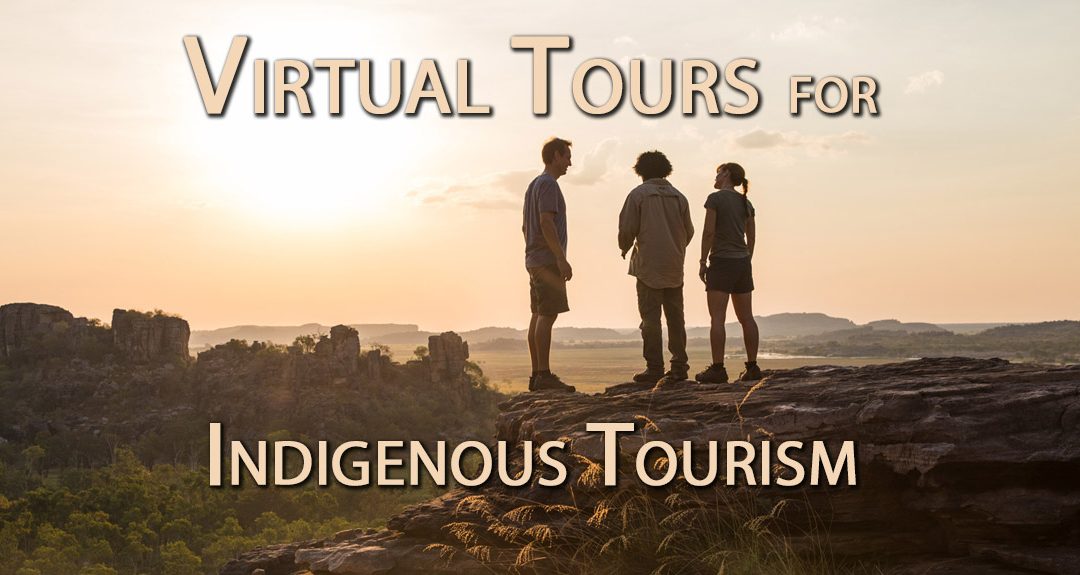Promoting Indigenous tourism in Australia through virtual tours is a fantastic way to showcase the rich cultural heritage, history, and natural beauty of Indigenous communities. Virtual tours can help potential travelers experience the unique aspects of Indigenous culture and traditions while raising awareness and appreciation for the diversity of Australian Indigenous communities.

Our Approach to Indigenous Tourism
Here’s how Virtualize operates to effectively use virtual tours to promote Indigenous tourism in Australia:
- Collaborate with Indigenous Communities: Before creating virtual tours, it’s essential to engage with Indigenous communities and gain their support and permission. Respect their cultural protocols, traditions, and sacred places. Involve local Indigenous guides and elders in the process to ensure the tours are authentic and accurate.
- Choose the Right Virtual Tour Platform: Select a user-friendly and interactive virtual tour platform that can provide a seamless experience to users. Consider 360-degree video or virtual reality (VR) technology to enhance immersion.
- Highlight Cultural Experiences: Focus on showcasing unique cultural experiences that travelers can participate in, such as traditional dances, art workshops, bush tucker (traditional food) experiences, storytelling, and guided walks through ancient landscapes.
- Showcase Natural Beauty: Indigenous tourism in Australia often revolves around breathtaking natural landscapes. Highlighting iconic locations, such as Uluru, Kakadu National Park, the Great Barrier Reef, and the Daintree Rainforest. Ensure that the virtual tours educate visitors about the cultural significance of these places.
- Educate about Indigenous History: Use the virtual tours to educate travelers about the history of Indigenous communities in Australia, including their resilience, contributions, and challenges they face today.
- Offer Customizable Tours: Provide options for tailored virtual tours that cater to different interests, such as art and craft enthusiasts, history buffs, or nature lovers. This will attract a wider audience and cater to diverse interests.
- Interactive Elements: Incorporate interactive elements within the virtual tours, such as quizzes, polls, or opportunities for travelers to ask questions to Indigenous guides. This engagement can foster a deeper connection and sense of understanding.
- Accessibility and Inclusivity: Ensure that the virtual tours are accessible to all, including people with disabilities, by providing closed captions, audio descriptions, and other accessibility features.
- Incorporate Sustainable Practices: Emphasize the importance of sustainable tourism and how travelers can support Indigenous communities through responsible and ethical practices.
- Collaborate with Tour Operators and Travel Agencies: Partner with tour operators and travel agencies to promote the virtual tours and incorporate them into their itineraries. This can help increase the reach and exposure of Indigenous tourism.
- Social Media and Online Marketing: Leverage social media platforms and online marketing strategies to promote the virtual tours. Engage with travel influencers and collaborate with them to reach a broader audience.
- Feedback and Continuous Improvement: Encourage feedback from virtual tour participants to improve the experience continually. Analyze user data to understand their preferences and interests better.

By leveraging the power of virtual tours, Indigenous tourism in Australia can gain a wider audience and create a deeper appreciation for the culture and heritage of Indigenous communities while contributing to their economic development and empowerment.
Find Out More…
If you’d like to discuss how we can help you to incorporate 360° Photos, Video or Virtual Tours into a Marketing Campaign to promote your facilities, please give Andy a call on 0403 023 223 or Contact Us.

